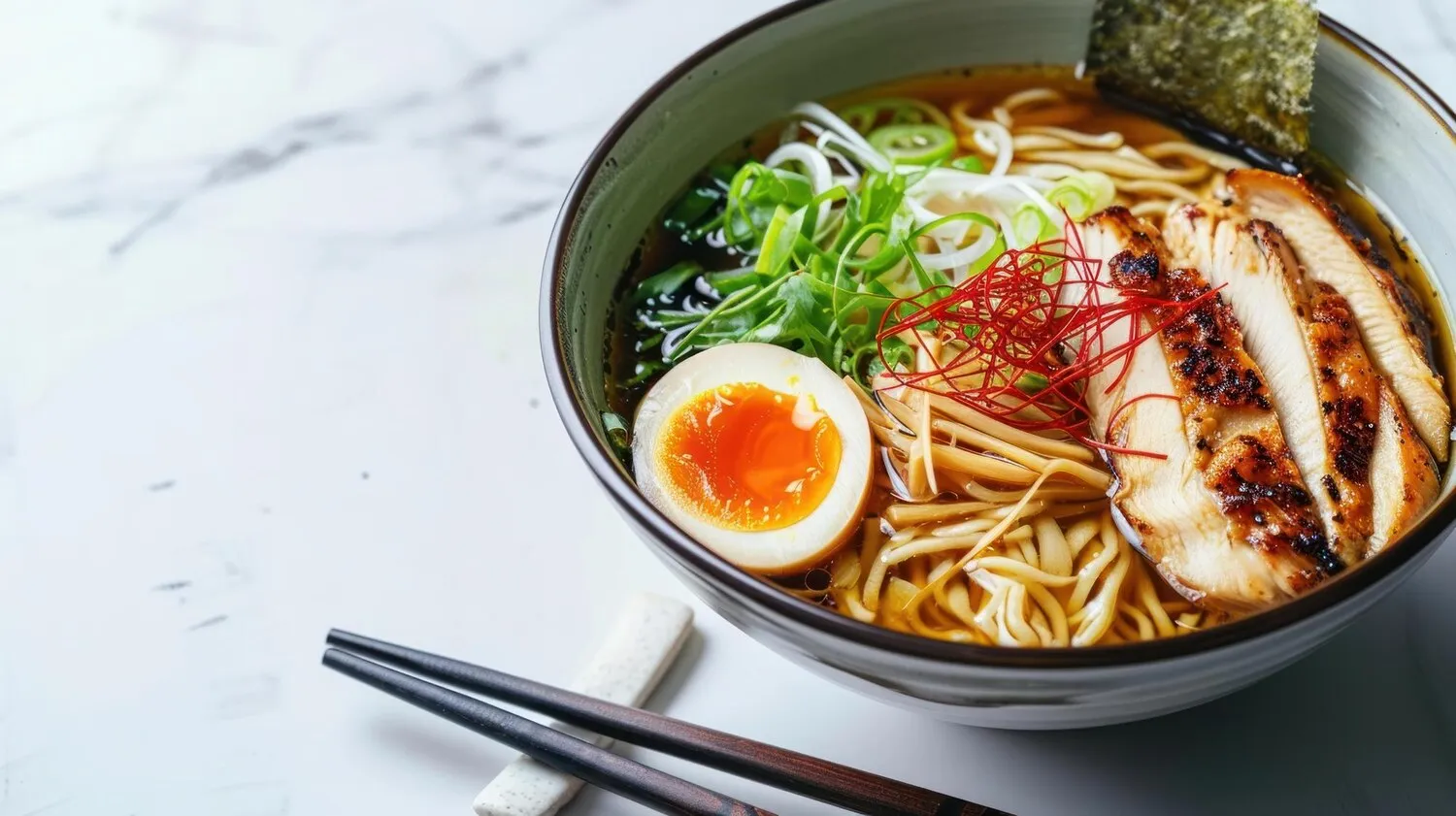
Ramen
Traditional Japanese noodle soup with various toppings, broth, and noodles.
Nutrition Facts
* The % Daily Value (DV) tells you how much a nutrient in a serving of food contributes to a daily diet. 2,000 calories a day is used for general nutrition advice.
Ramen's origins trace back to Chinese wheat noodles, which were introduced to Japan in the late 19th or early 20th century. Early ramen was known as 'Shina Soba' (Chinese soba). It wasn't until the post-World War II era, with the return of Japanese soldiers from China familiar with noodle soup dishes, and the establishment of black markets that provided access to wheat flour, that ramen truly took off as a distinct and popular Japanese dish.
Ramen holds a significant place in Japanese culture as an affordable, comforting, and highly customizable dish. It has evolved from a simple street food to a culinary art form, with countless regional variations and dedicated ramen shops.
Regional Variations
Each region of Japan boasts its unique ramen style, reflecting local ingredients and culinary traditions. Examples include Hakata ramen (Tonkotsu broth, thin noodles), Sapporo ramen (Miso broth, butter, corn), and Kitakata ramen (clear soy sauce broth, flat noodles).
Ramen Shops (Ramen-ya)
Ramen shops are ubiquitous throughout Japan, ranging from small, family-run establishments to modern, trendy eateries. These shops often specialize in a particular style of ramen and are judged on the quality of their broth, noodles, and toppings.
Slurping
Slurping ramen is considered a sign of enjoyment and appreciation in Japan. It also helps cool the noodles and enhances the flavors.
Ramen's flavor profile is incredibly diverse, built upon the complex umami of the broth, the texture of the noodles, and the complementary tastes of various toppings. The balance between saltiness, richness, and savory notes is key.
The broth, the heart of ramen, varies greatly. Common types include: Shoyu (soy sauce-based), Shio (salt-based), Miso (fermented soybean paste-based), and Tonkotsu (pork bone-based), each offering a distinct flavor profile. Noodles, typically made from wheat flour, water, salt, and kansui (alkaline mineral water), contribute to the overall taste and texture. Toppings such as chashu (braised pork belly), menma (fermented bamboo shoots), nori (dried seaweed), negi (scallions), ajitsuke tamago (soft-boiled marinated egg), and narutomaki (fish cake) add layers of flavor and visual appeal. Seasoning oils like mayu (garlic oil) or chili oil further enhance the broth's depth.
Noodle Firmness
In some ramen shops, you can specify the firmness of your noodles. 'Katame' (firm) and 'yawa me' (soft) are common requests.
Kaedama (Noodle Refill)
In some ramen shops, especially those serving Hakata-style ramen, you can order 'kaedama,' a refill of noodles to enjoy with the remaining broth.
Customize Your Order
Don't be afraid to customize your order! Ask for more or less toppings, adjust the spice level, or request a different type of seasoning oil.
Explore additional Soup, Noodles dishes and restaurants
Explore Soup, NoodlesDiscover top dining spots and culinary experiences in Milano.
Explore MilanoLearn more about the food culture, restaurant scene, and culinary heritage of Italy.
Explore Italy